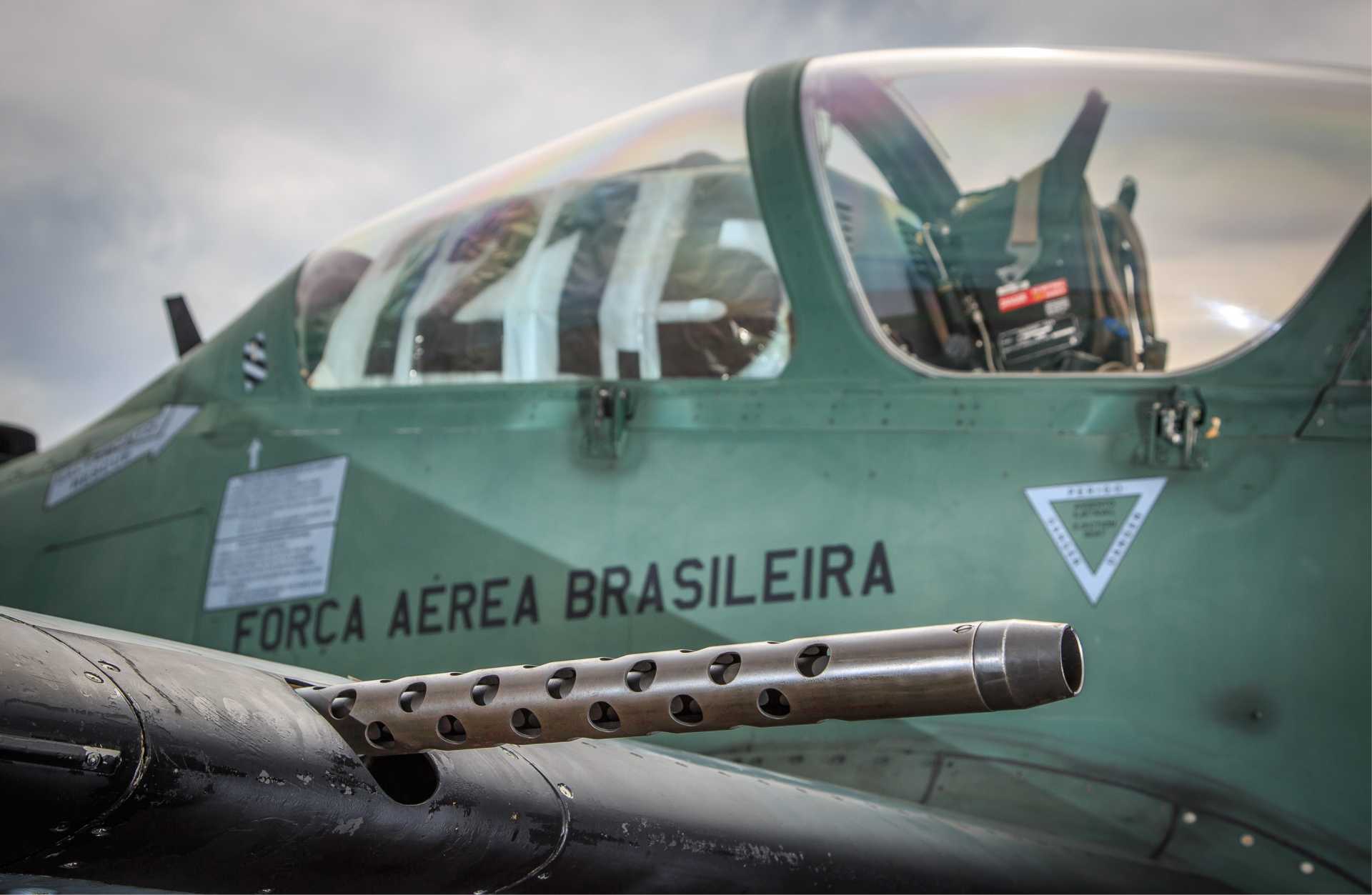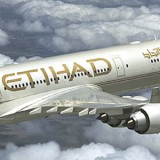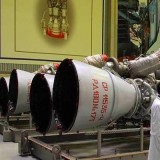Breaking News | Panama signs $78 million deal with Brazil to acquire first combat-capable aircraft in history

{loadposition bannertop}
{loadposition sidebarpub}
On April 2, 2025, during the LAAD 2025 exhibition, the Brazilian company Embraer confirmed that Panama had decided to acquire four A-29 Super Tucano light attack and advanced training aircraft, marking the first time the country would operate fixed-wing aircraft with combat capabilities. The aircraft will be operated by the Panamanian National Air and Naval Service (SENAN) and serve as a new surveillance and protection platform as part of a broader effort to expand operational capabilities and reinforce national security infrastructure. Alongside this procurement, Panama is also acquiring two Airbus C-295 medium tactical transport aircraft. The combined value of both acquisitions is approximately $187 million, with $78 million attributed to the Super Tucanos and $109 million to the C-295s.Follow Army Recognition on Google News at this link
For close air support missions, the Brazilian A-29 Super Tucano light attack aircraft can be fitted with the Giat NC621 20mm cannon pod or MAA-1 Piranha air-to-air missiles. (Picture source: Brazilian Air Force)
As announced by Army Recognition on 13 March 2025, Panama’s government has previously stated that these light attack aircraft will be used to address illicit activities within national territory, such as drug trafficking and illegal fishing, as well as for border patrol, surveillance, special operations, and pilot training. SENAN currently lacks combat aircraft and performs air patrol missions using liaison and transport aircraft. This acquisition is part of a program to modernize Panama’s aerial fleet, replacing 14 aircraft operated since the 1980s, which incur estimated annual maintenance costs of $10 million. Officials have emphasized that these new platforms will not be used for offensive operations and that Panama remains committed to its demilitarized security status, with SENAN functioning as a civil security agency rather than a military force.
With this announcement, Panama becomes the eighth Latin American country to adopt the A-29 Super Tucano, joining Brazil, Chile, Colombia, Ecuador, Paraguay, Uruguay, and the Dominican Republic. The decision to procure these aircraft comes amid increased security concerns and follows political tensions that escalated in December 2024 when U.S. President Donald Trump threatened to reassert U.S. control over the Panama Canal, citing excessive tolls and Chinese influence. The Panamanian government responded with strong statements reaffirming its sovereignty, and the aircraft deal may reflect a broader effort to strengthen state capacity and defend critical national infrastructure.
The A-29 Super Tucano, developed by Embraer, is a turboprop light attack and reconnaissance aircraft derived from the EMB-312 Tucano. It is powered by a 1,600-horsepower Pratt & Whitney Canada PT6A-68C engine and a five-bladed Hartzell propeller, enabling speeds up to 590 kilometers per hour, a service ceiling of 10,670 meters, and a range of 2,800 kilometers. Designed to operate from austere airstrips, the aircraft features reinforced landing gear, Kevlar armor around the cockpit and engine, and internal FN Herstal .50 caliber machine guns with 200 rounds each. It supports a wide range of mission profiles, including air patrol, tactical coordination, ISR, border surveillance, and pilot training. Its avionics suite includes night vision compatibility, a forward-looking infrared sensor, a mission computer, and targeting systems with laser rangefinders and electronic countermeasures.
The aircraft’s five external hardpoints allow it to carry a variety of weapons, including unguided Mk 81 and Mk 82 bombs, laser-guided Paveway II munitions, JDAMs, air-to-air missiles such as the MAA-1 Piranha, and 20 mm cannon pods. The platform is also compatible with targeting pods and advanced navigation systems, offering operational flexibility with relatively low logistical demands. As of April 2025, more than 290 Super Tucanos have been ordered globally, and over 580,000 flight hours have been logged across 20 air forces. In Latin America and other regions, the aircraft has been used in counterinsurgency, narcotics interdiction, and precision strike operations. Embraer also announced in recent years a NATO-standard variant, the A-29N, which incorporates advanced communications and is configured for single-pilot operation.
With this announcement, Panama becomes the eighth Latin American country to adopt the A-29 Super Tucano, joining Brazil, Chile, Colombia, Ecuador, Paraguay, Uruguay, and the Dominican Republic. (Picture source: Brazilian Air Force)
The recent procurement is part of a larger trend of renewed interest in the Super Tucano platform. After a three-year pause, Embraer resumed contracts in 2024 with orders from Uruguay and Paraguay, as well as a NATO-standard variant for Portugal. Embraer CEO Bosco da Costa Junior stated that the selection by Panama would support the country’s efforts to maintain sovereignty and preserve its natural resources. The Cabinet approved the acquisition through an exceptional process, and while most of the financing is expected to come from external sources, the final structure has not yet been fully disclosed. The aircraft are intended to support aerial patrol missions that Panama has historically been unable to conduct due to capability limitations.
This strategic acquisition has sparked debate within the country. Some civil society groups and political commentators have criticized the $187 million expenditure, suggesting that funds could have been allocated to social sectors like healthcare and education. Others question whether the procurement constitutes a shift away from Panama’s longstanding demilitarization policy. In response, government officials have reiterated that the aircraft will only be used for surveillance and non-offensive purposes, and that the investment is necessary to address growing security threats, including unauthorized flights and increased organized crime activity in Panamanian airspace.
Panama’s current aerial fleet consists of 24 aircraft and helicopters used for patrol, transport, and training. These include Beechcraft Cessna 208B Grand Caravans, Piper PA-34 Senecas, Airbus C-212 Aviocars, De Havilland Canada DHC-6 Twin Otters, MD Helicopters MD-500s, Bell 412s, and a single Sikorsky UH-60 Black Hawk. For pilot instruction, SENAN operates five Enaer T-35C Pillán aircraft. The addition of the C-295s will restore Panama’s medium airlift capacity, which has been absent since the early 1990s following the sale of its only CASA CN-235. The C-295, developed by Airbus, has a 24-meter fuselage, a payload capacity of 9,250 kilograms, and can carry more than 70 passengers. It is powered by two PW127G engines with six-bladed propellers, reaching speeds of up to 482 kilometers per hour and a service ceiling of 9,145 meters.
The acquisition of the Super Tucanos, combined with the new C-295s, signals a major shift in Panama’s security capabilities. While the government continues to stress the non-military purpose of these aircraft, their capabilities extend beyond basic surveillance, potentially altering the strategic balance in the region and positioning Panama among a growing number of countries that have opted for multi-role turboprop aircraft for both internal security and border protection missions.

{loadposition bannertop}
{loadposition sidebarpub}
On April 2, 2025, during the LAAD 2025 exhibition, the Brazilian company Embraer confirmed that Panama had decided to acquire four A-29 Super Tucano light attack and advanced training aircraft, marking the first time the country would operate fixed-wing aircraft with combat capabilities. The aircraft will be operated by the Panamanian National Air and Naval Service (SENAN) and serve as a new surveillance and protection platform as part of a broader effort to expand operational capabilities and reinforce national security infrastructure. Alongside this procurement, Panama is also acquiring two Airbus C-295 medium tactical transport aircraft. The combined value of both acquisitions is approximately $187 million, with $78 million attributed to the Super Tucanos and $109 million to the C-295s.
Follow Army Recognition on Google News at this link
For close air support missions, the Brazilian A-29 Super Tucano light attack aircraft can be fitted with the Giat NC621 20mm cannon pod or MAA-1 Piranha air-to-air missiles. (Picture source: Brazilian Air Force)
As announced by Army Recognition on 13 March 2025, Panama’s government has previously stated that these light attack aircraft will be used to address illicit activities within national territory, such as drug trafficking and illegal fishing, as well as for border patrol, surveillance, special operations, and pilot training. SENAN currently lacks combat aircraft and performs air patrol missions using liaison and transport aircraft. This acquisition is part of a program to modernize Panama’s aerial fleet, replacing 14 aircraft operated since the 1980s, which incur estimated annual maintenance costs of $10 million. Officials have emphasized that these new platforms will not be used for offensive operations and that Panama remains committed to its demilitarized security status, with SENAN functioning as a civil security agency rather than a military force.
With this announcement, Panama becomes the eighth Latin American country to adopt the A-29 Super Tucano, joining Brazil, Chile, Colombia, Ecuador, Paraguay, Uruguay, and the Dominican Republic. The decision to procure these aircraft comes amid increased security concerns and follows political tensions that escalated in December 2024 when U.S. President Donald Trump threatened to reassert U.S. control over the Panama Canal, citing excessive tolls and Chinese influence. The Panamanian government responded with strong statements reaffirming its sovereignty, and the aircraft deal may reflect a broader effort to strengthen state capacity and defend critical national infrastructure.
The A-29 Super Tucano, developed by Embraer, is a turboprop light attack and reconnaissance aircraft derived from the EMB-312 Tucano. It is powered by a 1,600-horsepower Pratt & Whitney Canada PT6A-68C engine and a five-bladed Hartzell propeller, enabling speeds up to 590 kilometers per hour, a service ceiling of 10,670 meters, and a range of 2,800 kilometers. Designed to operate from austere airstrips, the aircraft features reinforced landing gear, Kevlar armor around the cockpit and engine, and internal FN Herstal .50 caliber machine guns with 200 rounds each. It supports a wide range of mission profiles, including air patrol, tactical coordination, ISR, border surveillance, and pilot training. Its avionics suite includes night vision compatibility, a forward-looking infrared sensor, a mission computer, and targeting systems with laser rangefinders and electronic countermeasures.
The aircraft’s five external hardpoints allow it to carry a variety of weapons, including unguided Mk 81 and Mk 82 bombs, laser-guided Paveway II munitions, JDAMs, air-to-air missiles such as the MAA-1 Piranha, and 20 mm cannon pods. The platform is also compatible with targeting pods and advanced navigation systems, offering operational flexibility with relatively low logistical demands. As of April 2025, more than 290 Super Tucanos have been ordered globally, and over 580,000 flight hours have been logged across 20 air forces. In Latin America and other regions, the aircraft has been used in counterinsurgency, narcotics interdiction, and precision strike operations. Embraer also announced in recent years a NATO-standard variant, the A-29N, which incorporates advanced communications and is configured for single-pilot operation.

With this announcement, Panama becomes the eighth Latin American country to adopt the A-29 Super Tucano, joining Brazil, Chile, Colombia, Ecuador, Paraguay, Uruguay, and the Dominican Republic. (Picture source: Brazilian Air Force)
The recent procurement is part of a larger trend of renewed interest in the Super Tucano platform. After a three-year pause, Embraer resumed contracts in 2024 with orders from Uruguay and Paraguay, as well as a NATO-standard variant for Portugal. Embraer CEO Bosco da Costa Junior stated that the selection by Panama would support the country’s efforts to maintain sovereignty and preserve its natural resources. The Cabinet approved the acquisition through an exceptional process, and while most of the financing is expected to come from external sources, the final structure has not yet been fully disclosed. The aircraft are intended to support aerial patrol missions that Panama has historically been unable to conduct due to capability limitations.
This strategic acquisition has sparked debate within the country. Some civil society groups and political commentators have criticized the $187 million expenditure, suggesting that funds could have been allocated to social sectors like healthcare and education. Others question whether the procurement constitutes a shift away from Panama’s longstanding demilitarization policy. In response, government officials have reiterated that the aircraft will only be used for surveillance and non-offensive purposes, and that the investment is necessary to address growing security threats, including unauthorized flights and increased organized crime activity in Panamanian airspace.
Panama’s current aerial fleet consists of 24 aircraft and helicopters used for patrol, transport, and training. These include Beechcraft Cessna 208B Grand Caravans, Piper PA-34 Senecas, Airbus C-212 Aviocars, De Havilland Canada DHC-6 Twin Otters, MD Helicopters MD-500s, Bell 412s, and a single Sikorsky UH-60 Black Hawk. For pilot instruction, SENAN operates five Enaer T-35C Pillán aircraft. The addition of the C-295s will restore Panama’s medium airlift capacity, which has been absent since the early 1990s following the sale of its only CASA CN-235. The C-295, developed by Airbus, has a 24-meter fuselage, a payload capacity of 9,250 kilograms, and can carry more than 70 passengers. It is powered by two PW127G engines with six-bladed propellers, reaching speeds of up to 482 kilometers per hour and a service ceiling of 9,145 meters.
The acquisition of the Super Tucanos, combined with the new C-295s, signals a major shift in Panama’s security capabilities. While the government continues to stress the non-military purpose of these aircraft, their capabilities extend beyond basic surveillance, potentially altering the strategic balance in the region and positioning Panama among a growing number of countries that have opted for multi-role turboprop aircraft for both internal security and border protection missions.




